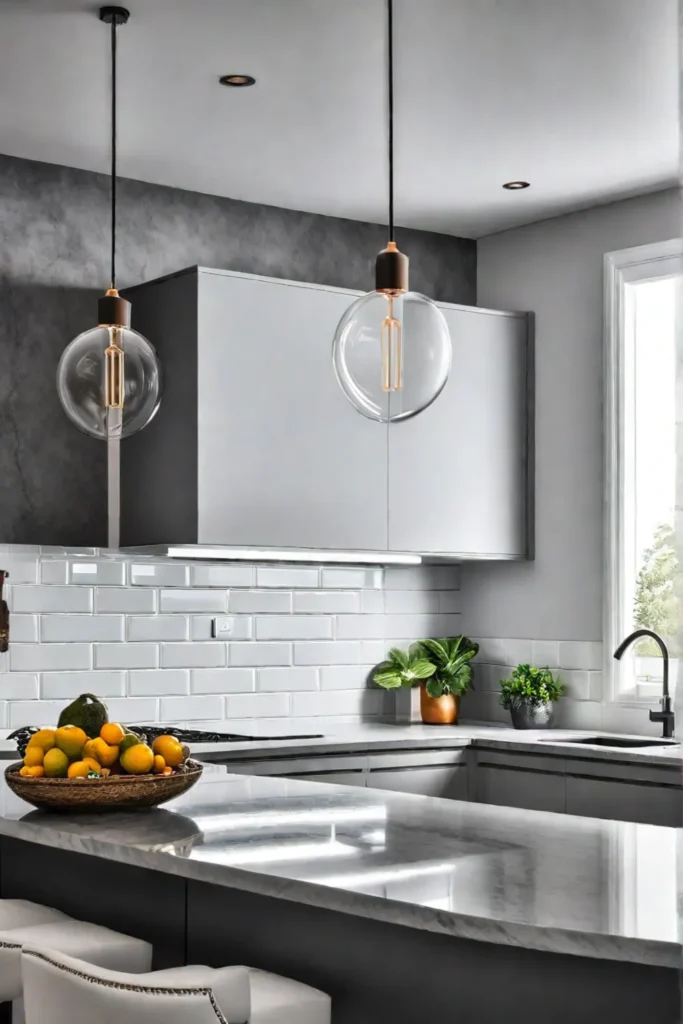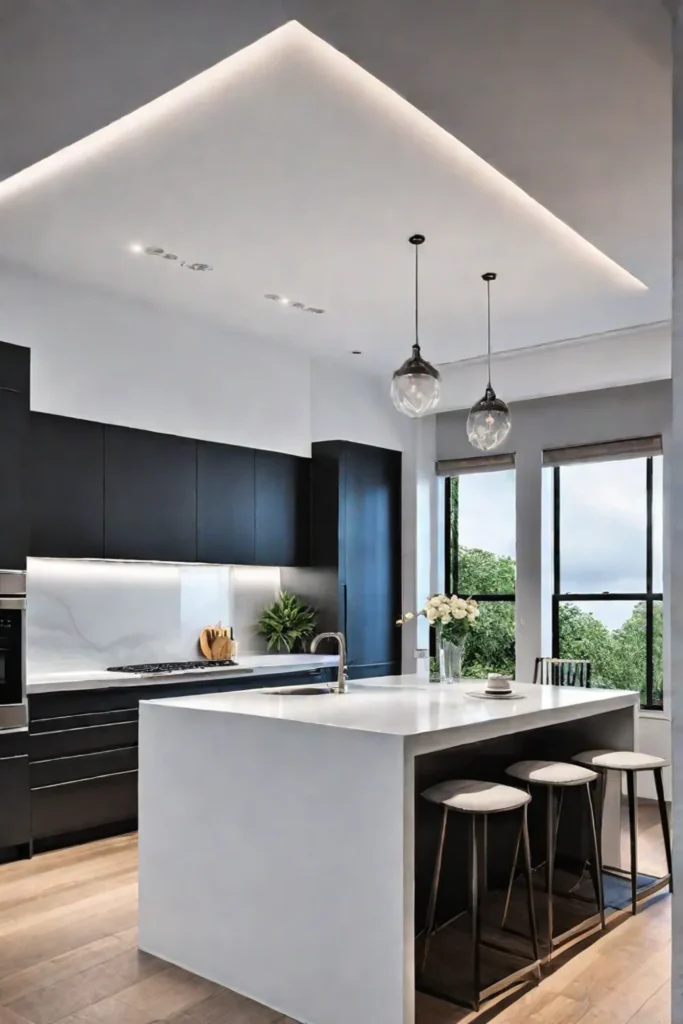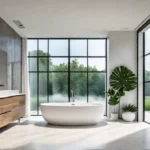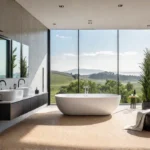Have you ever walked into a kitchen that left you feeling inspired, energized, and ready to whip up a culinary masterpiece? The secret often lies in the lighting – a harmonious blend of task, ambient, and accent illumination that transforms the space into a functional and visually captivating canvas. In this comprehensive guide, we’ll explore the latest trends and techniques in modern kitchen lighting, empowering you to create a culinary haven that radiates warmth, style, and efficiency.

Layering Lighting for Optimal Functionality
Imagine a kitchen where every nook and cranny is bathed in the perfect light, effortlessly guiding you through culinary adventures. This harmonious blend of task, ambient, and accent lighting is the foundation of a well-designed kitchen lighting scheme. By strategically layering these three elements, you can create a space that looks stunning and functions flawlessly.
Task lighting, such as under-cabinet fixtures or pendant lights over the island, illuminates your work surfaces, ensuring precision and safety during food preparation. Ambient lighting, often achieved through recessed or pendant fixtures, provides a soft, even glow that fills the entire space, creating a warm and inviting atmosphere. Finally, accent lighting, like strategically placed track lights or decorative sconces, adds depth and dimension by highlighting architectural features or eye-catching design elements.

The key to success is striking the perfect balance between these layers, allowing them to complement one another seamlessly. As Jane Thompson, our eco-conscious lifestyle blogger, reminds us, “Lighting is the brush that paints the mood and ambiance of your kitchen. By mastering the art of layering, you can create a space that nourishes your body and uplifts your spirit.”
Pendant Lights: Illuminating the Heart of the Kitchen
Pendant lights have become a staple in modern kitchen design, offering a versatile and visually striking solution for task and ambient lighting. These suspended fixtures have evolved from traditional to contemporary, with styles ranging from sleek and minimalist to bold and sculptural. Not only do they provide functional illumination, but they also serve as focal points, defining the heart of the kitchen and adding visual interest.
When selecting pendant lights, consider the size, shape, and material that best complements your kitchen’s style. Opt for pendants crafted from natural materials like wood or wrought iron for a warm, rustic vibe. Modern kitchens call for clean lines and materials like glass or metal. Position pendant lights over islands, dining areas, or other key zones to create a cohesive and inviting atmosphere.

One trend that Jane is particularly excited about is the integration of dimmable pendant lights. “Imagine setting the mood with just the touch of a button,” she says. “Dimmable pendants allow you to transition seamlessly from a bright, task-oriented space to a cozy, intimate setting perfect for entertaining.”
Recessed Lighting: Illuminating the Entire Kitchen Canvas
Recessed lighting is popular for modern kitchen design, offering a clean, seamless, and highly functional lighting solution. These unobtrusive fixtures are installed flush with the ceiling, providing ambient illumination and enhancing the overall brightness of the space. As technology has advanced, recessed lighting has evolved from traditional incandescent to energy-efficient LED options, making it stylish and eco-friendly.

One key advantage of recessed lighting is its ability to create the illusion of height and spaciousness. By strategically placing and spacing the fixtures, you can achieve even and efficient illumination throughout the kitchen, eliminating dark corners and creating a sense of openness.
When selecting recessed lights, consider the trim style and beam angle to achieve the desired lighting effect. Opt for timeless or low-profile trims that blend seamlessly into the ceiling for a modern, minimalist look. Wider beam angles are ideal for general ambient lighting, while narrower beams can highlight specific areas or features.

Jane emphasizes integrating recessed lighting with other kitchen lighting elements for a cohesive and balanced design. “Recessed lighting shouldn’t be an afterthought,” she says. “By carefully coordinating it with task and accent lighting, you can create a harmonious and visually stunning environment that truly showcases the heart of your home.”
Under-Cabinet Lighting: Illuminating the Workspaces
Step into any well-designed modern kitchen, and you’ll likely find a warm, inviting glow beneath the cabinets. Under-cabinet lighting has become an essential element in contemporary kitchen design, providing targeted task lighting and enhancing the space’s overall aesthetic.

There are numerous under-cabinet lighting options, from sleek LED strips to puck lights and integrated fixtures. When selecting the right solution, consider cabinet depth, material, and layout factors. For instance, shallow cabinets may benefit from slim LED strips, while deeper cabinets could accommodate puck lights or integrated fixtures.
Jane emphasizes the importance of seamless integration when it comes to under-cabinet lighting. “The key is to create a cohesive look that blends effortlessly with the overall kitchen design,” she advises. “Whether you’re opting for a minimalist or a more decorative approach, under-cabinet lighting should complement the space, not detract from it.”

Consider incorporating dimmable or motion-activated under-cabinet lighting to enhance functionality and energy efficiency further. This allows you to adjust the illumination levels based on your needs and helps conserve power when the space is unused.
Statement Lighting Fixtures: Elevating the Kitchen’s Focal Points
In modern kitchen design, statement lighting fixtures have emerged as the centerpieces, commanding attention and elevating the overall aesthetic. From grand chandeliers to dramatic pendants, these eye-catching pieces add visual interest and a touch of luxury to the culinary canvas.

When selecting a statement lighting fixture, consider your kitchen’s size, style, and scale. A large, open-concept space may call for a bold, oversized chandelier. At the same time, a more intimate kitchen could benefit from a cluster of pendants or a sculptural piece suspended over the island.
Jane reminds us to strike a balance between the statement fixture and the overall kitchen design. “While a statement lighting piece should undoubtedly be the focal point, it shouldn’t overpower the space,” she cautions. “Carefully consider the proportions, materials, and finishes to ensure a harmonious and cohesive look.”

Consider incorporating dimmable or adjustable features to enhance the impact of your statement lighting further. This not only allows you to control the ambiance but also enables you to highlight specific areas or create a dramatic effect for special occasions.
Natural Light Optimization: Harnessing the Power of the Sun
While artificial lighting is essential for a well-designed kitchen, there’s nothing quite like the warmth and vibrancy of natural light. Harnessing the sun’s power enhances the overall ambiance and functionality of the space and offers numerous psychological and health benefits.

Consider strategic window placement, size, and design to maximize natural light in your kitchen. Large windows or sliding glass doors can flood the space with sunlight, creating a bright and airy atmosphere. Skylights are another excellent option, particularly for kitchens with limited wall space or those looking to bring in light from above.
When incorporating natural light, striking a balance and controlling glare is crucial. Jane recommends selecting the right window treatments, such as sheer curtains or adjustable blinds, to manage the amount of light entering the space. “Natural light is beautiful, but too much direct sunlight can create harsh shadows and make it difficult to work,” she explains.

By seamlessly integrating natural light with artificial lighting sources, you can create a harmonious and visually appealing kitchen environment that looks stunning and promotes well-being and productivity.
Creating Ambiance through Lighting Control
In modern kitchen design, lighting control is no longer a luxury – it’s a necessity. With the ability to customize the ambiance and mood of your space at the touch of a button, you can transform your kitchen from a bright, energetic workspace to a cozy, intimate gathering spot.

The key to achieving this versatility is embracing various lighting control technologies, such as dimmers, smart lighting systems, and motion sensors. Dimmable fixtures allow you to adjust light intensity, creating the perfect atmosphere for any occasion. Smart lighting systems take it a step further, enabling you to program preset lighting scenes and schedules based on the time of day or activity.
Jane is particularly enthusiastic about the integration of motion sensors in the kitchen. “Imagine walking into your kitchen and having the lights automatically turn on, illuminating your path,” she says. “Not only is it incredibly convenient, but it also promotes energy efficiency by ensuring that lights are only on when needed.”

By seamlessly integrating lighting control systems with your kitchen design and technology ecosystem, you can elevate the user experience and create a truly personalized, adaptable space that caters to your every need.
Highlighting with Lighting: Showcasing Kitchen Features
In modern kitchen design, thoughtful lighting can do more than illuminate – it can also be a powerful tool to highlight and accentuate specific features, drawing the eye to key design elements and creating a visually striking environment.

Accent lighting, such as under-cabinet fixtures, track lighting, or strategically placed recessed lights, can emphasize architectural details, cabinetry, or other design features. By carefully positioning and adjusting the intensity of these accents, you can create depth and dimension, guiding the viewer’s gaze and adding visual interest to the space.
Jane encourages homeowners to explore decorative lighting options like wall sconces or shelving lights. “These little touches can add warmth and personality to your kitchen, transforming it from a purely functional space to a true reflection of your style and taste,” she says.

However, it’s essential to strike a balance when incorporating accent lighting. Careful placement and intensity control is crucial to avoid creating harsh shadows or uneven illumination that detract from the overall aesthetic.
Conclusion
In modern kitchen design, lighting is more than just a functional necessity – it’s an art form that can transform your culinary canvas into a masterpiece. By embracing layering principles, incorporating statement fixtures, optimizing natural light, and leveraging lighting control, you can create a space that looks stunning and functions flawlessly.
As Jane Thompson reminds us, “Your kitchen is the heart of your home, and the lighting is its heartbeat. You can create a space that nourishes your body, mind, and soul by carefully curating the perfect blend of task, ambient, and accent illumination.”
So, embrace the power of modern kitchen lighting and let your culinary canvas shine. Whether you’re whipping up a gourmet meal or gathering with loved ones, your kitchen will truly reflect your unique style and vision, radiating warmth, functionality, and inspiration with every flick of a switch.










